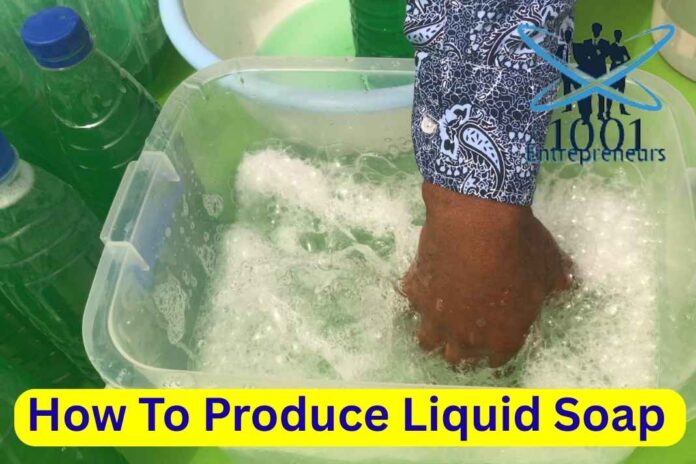The production of liquid soap has become a very popular global skill today. Many use Liquid soap for domestic purposes at home to wash clothes and kitchen utensils; restaurants and eateries are not left out either.
It may interest you to know that the demand for liquid soap today is very high, but it does not meet its production. Even though a lot of people now venture into the business of soap production, gaps in demand persist.
Apart from domestic consumption, it is advisable to start the business of Liquid soap production. The market is always there. More so, the capital required for this venture is usually very low. Also, one may not require any further teaching since everything is now on the internet.
This article was carefully written to guide those who may wish to produce liquid soap by themselves. Note, there might be other methods used for the production of liquid soap, but this, in particular, is one of the best. This is because it is the product of so much research and expertise of the author.
The author (Admin 1001 Entrepreneurs) is well-versed in this kind of production. He has tutored numerous small and medium-sized business owners. You can join the wagon of 1001 Entrepreneurs’ Telegram Group. It is a forum of intending and already practising entrepreneurs and DIY enthusiasts.
We are building a family! Click >>HERE to join.
Check out these reviews from our YouTube & Telegram Communities
Still on the subject matter, you can start the business today on your own. If you can specialise in the production and marketing of liquid soaps, you will make yourself a lot of money.
CHEMICALS REQUIRED FOR THE PRODUCTION OF LIQUID SOAP AND THEIR PROPORTIONS
The Chemicals required to produce liquid soaps are available everywhere and are also not expensive. You can get them easily from your main or major markets. Just ask traders around where you can buy chemicals for liquid soap, and they will describe the locations where you can find them.
Here are the chemicals for the production of about 20 litres of ‘Multi-purpose Liquid Soap’. Your chemical vendor can also advise you on the measurement for smaller volumes. Smaller volumes like 15 litres, 10 litres, 5 litres or as the case may be:
1. Nitrosol (or Antisol)…….………….1/8kg (i.e 125g).
2. Caustic Soda…………………..………1/16kg (i.e 62.5g)
3. Soda Ash (Sodium carbonate).1/8 Kg
4. SLS (Sodium Lauryl Sulphate)..1/8kg
5. Sulphonic Acid………………..………1 ½ Ltr
6. STPP…………………………………………1/16Kg
7. Texapon …………………………………1/8kg
8. Foam Booster…………………………1/6 Ltr
9. Formalin…………………………………10Cl
10. Colour …………………………………(As desired)
11. Glycerine……………………………..(Optional)
12. Perfume……………………………….(As desired)
13. Vitamin E ……………………………(Optional)
The vendors selling these chemicals usually sell them already measured according to the volume of liquid soap to be produced. (If you can, try to get your measurement devices for accurate measurements) Just tell them how much volume you want to produce, and they will give you the measurements of chemicals you require. It is advisable to start with a small volume and grow bigger later.
Now let’s dive into the procedure for the liquid soap production. But first things first; it is important to familiarize ourselves with the functions of the chemicals used. This will help you to know what to expect as the final product, or even during the reaction phases.
CHEMICALS USED AND FUNCTIONS
Water:
Water is the main solvent needed for the process to dissolve the various ingredients. It is very essential in the production of liquid soap.
You might be asking if water is a chemical. Yes! Water is a chemical compound made up of two hydrogen atoms and one oxygen atom (H2O). The name water refers to the liquid state of that compound. So, water is a chemical compound.
Nitrosol/Antisol:
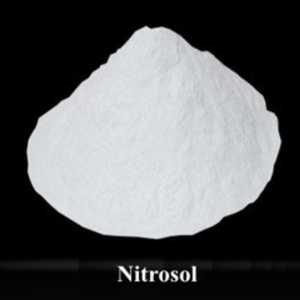
Nitrosol is used to thicken liquids and also to stabilize emulsions. It is a thickener in our liquid soap production. Antisol can also be used if Nitrosol is not available. Although Nitrosol will dissolve immediately in water while Antisol takes a longer time. Most times, Antisol solution takes about 24 to 48 hours to dissolve completely.
Caustic Soda:
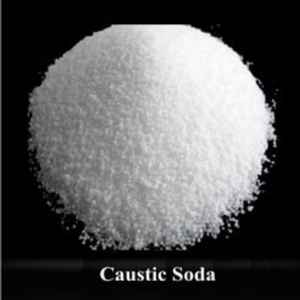
This is a stain or dirt removal agent in the liquid soap. Caustic soda is so powerful that it can clean and remove dirt, grease, and grime from surfaces. When used in the right way, it produces a high-quality, liquid soap. One must be careful when using this chemical, because it can be caustic to the skin if abused. So, don’t deviate from formulation, except you know what you are doing.
Soda Ash (Sodium carbonate):
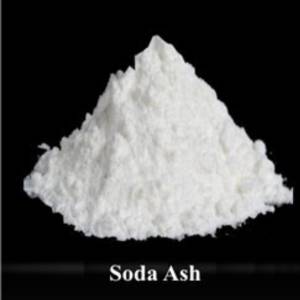
Soda ash is used in liquid soap production as a pH adjuster. It helps to bring the pH of the liquid soap to a neutral level. This makes it important for both the soap’s efficacy and the users’ safety.
It is very important to have it in your liquid soap because without it, the soap is more likely to irritate the skin.
SLS (Sodium Lauryl Sulphate):
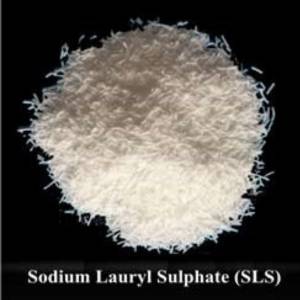
The Sodium Lauryl Sulfate (SLS) is the main active foaming agent in many products such as shampoos, body washes, laundry detergents, etc.
In liquid soap and dishwashing liquid production, it is used as a foaming agent and an emulsifier. As an emulsifier, it helps to keep oils and dirt suspended in the soap solution until they are rinsed away. SLS is the principal ingredient responsible for the liquid soap’s foamy lather.
Texapon:
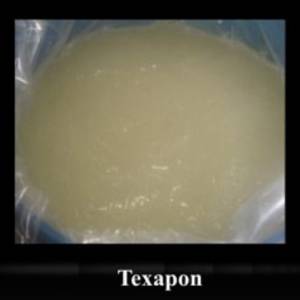
Texapon acts as a surfactant, which helps to reduce the surface tension of water. This makes it more effective at cleaning surfaces. Also, Texapon acts as an emulsifier, which helps to keep oil and water from separating. Texapon is also an important foaming agent in liquid soap production.
More so, Texapon helps in improving the shelf life of liquid soaps, by making them last longer without separating or deteriorating.
Sulphonic Acid:
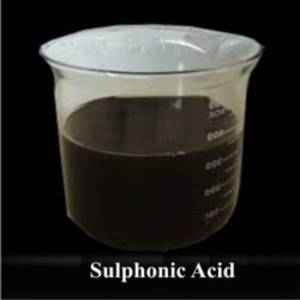
Sulphonic acid is a good surfactant in liquid soap. It helps to lower the surface tension of water, allowing it to disperse and penetrate the surface more effectively. Breaks down oils and dirt, allowing the soap to suspend these particles in water so that they can be rinsed away
Apart from being a powerful surfactant, it also provides antiseptic properties to the soap, helping to protect against bacteria and other germs or contaminants.
STPP (Sodium Tripolyphosphate):
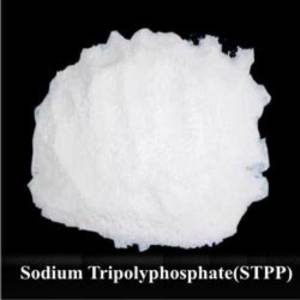
Sodium Tripolyphosphate (STPP) is primarily used as a strong cleaning agent and helps to improve the cleaning properties of the liquid soap. STPP helps the SLS to work to its full potential. It also helps to thicken the soap.
Foaming Booster:
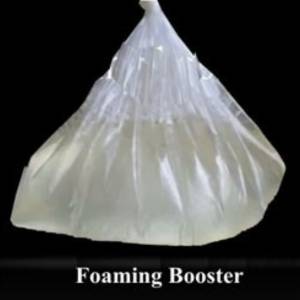
Foaming boosters are added to liquid soaps to increase their foaming and cleansing ability. When added to soap, they also help to lower the surface tension of the water, which allows for more bubbles to be formed.
Foaming boosters are often used in conjunction with other foaming agents such as surfactants (like SLS (sodium lauryl sulfate) or Texapon)
Formalin:
Formalin is a liquid compound that is used as a preservative in many industries, including liquid soap production. It is a colourless, odourless gas that is dissolved in water to form a clear solution.
It is an effective preservative that helps to control the growth of bacteria and fungi and prevents the spoilage of products. So many controversies surrounds the use of formalin; especially with regards to health hazard. Refer to our eBook “12 Essential Household Products” to read details. And also find out about other preservatives you can use.
Note: The use of preservatives in Liquid Soap Production is not mandatory!
Colour:
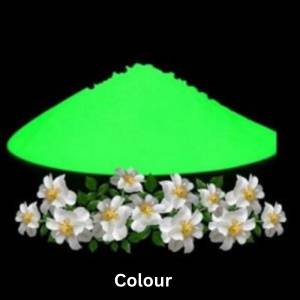
Colours adds beauty to the finished product. Most liquid soap producers go with green colour. If you want to have a natural-looking soap, you might want to choose a light colour. For more vibrant-looking soap, you may choose a brighter colour.
Glycerine:
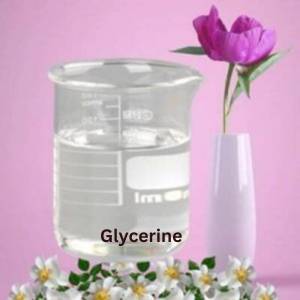
Glycerine is a natural humectant, meaning it helps to keep things moist. It is also an emollient, meaning it can help to soften and smooth the skin. In addition, vegetable glycerine is a good source of antioxidants and can help to protect the skin from damage.
While glycerine is not required in liquid soap recipes, it can be a nice addition if you’re looking for a more moisturizing soap.
Too much glycerine can make your liquid soap watery or runny. So, it is important to stick with the formulation.
Perfume:
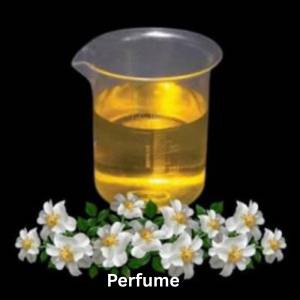
Perfume is important in liquid soap production because it can cover up the unpleasant smell of the soap base. So, if you’re looking to add a touch of luxury to your liquid soap products, consider adding perfume.
Perfume can help to give your soaps a beautiful scent, and can also be used to create unique, signature scents for your brand.
Most people prefer lemon, pineapple, ambi pur, lavender or strawberry fragrance in their production.
Vitamin E:
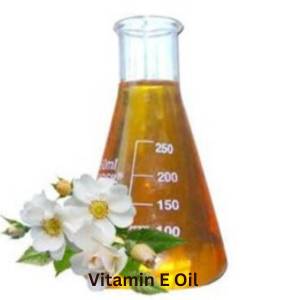
Vitamin E oil is often used as an additive in liquid soap production. Its main function is to act as an emollient, or moisturizing agent. Also helps to protect the skin from damage, wrinkles, etc.
Liquid soaps made with vitamin E oil are often more expensive than those made without it. So, many people believe that the benefits of using a vitamin E-enriched liquid soap are worth the extra cost.
Get detailed functions of so many chemicals used in various productions, in our eBook
>>The 12 Essential Household Products<<
Download Button
It is a comprehensive step-by-step production guides for 12 household essential products; plus additional 4 products that are still necessary in every home. Here is an insight into the eBook
Chapter 1: Production Of Perfume With Long-lasting Fragrance
Chapter 2: Production Of Transparent Liquid Soap
Chapter 3: Production Of Multi-purpose Liquid Soap
Chapter 4: Production Of Household Bleach (Commercial Standard)
Chapter 5: Production Of Car Wash Liquid Soap
Chapter 6: Production Of Anti-Dandruff Hair Pomade
Chapter 7: Production Of Premium Hair Conditioner
Chapter 8: Production Of High-Quality Hair Shampoo
Chapter 9: Production Of Liquid Antiseptic Disinfectant Like Dettol
Chapter 10: Production Of Quality Germicide Like Izal
Chapter 11: Production Of Liquid Air Freshener
Chapter 12: Production Of Top Quality Petroleum Jelly Like Vaseline
Bonus Chapters:
Chapter 13: Production Of Hot Balm
Chapter 14: Production Of Hand Sanitizer (WHO Standard)
Chapter 15: Production Of Antiseptic Hand Wash
Chapter 16: Production Of Aftershave
It doesn’t end there, the eBook contains a FREE link to the ‘Premium Telegram Group’, where you get opportunity to access exclusive contents and updates not shared in the General group.
It is easy to download this 121 page ebook, Click button below:
OTHER REQUIREMENTS FOR THE PRODUCTION OF LIQUID SOAP
1. A big mixing bowl
2. Containers
3. Wooden spoon or stick for stirring (or a hand mixer for chemicals if you can afford one)
4. A pair of Scissors
5. Spoon
6. Hand glove
7. Nose mask
8. Rubber gloves
9. Measurement bowl or container or beaker
IMPORTANT SAFETY CONSIDERATIONS IN LIQUID SOAP PRODUCTION
The need for safety when dealing with chemicals cannot be overemphasized. This is not only peculiar to liquid soap production, but productions involving the use of chemicals generally. The production should not be too urgent or too important that you would not take all the time to do it safely.
Here are a few safety tips to help you stay safe, before, during or after the production of your liquid soap:
• Work in a well-ventilated and properly illuminated environment
• Keep all chemicals properly labelled.
• Keep chemicals out of reach of children and pets
• Keep chemicals in cool dry place, and away from children.
• When you are not sure of any particular chemical, do not use it, or ask professionals.
• Use protective gears like nose masks, face shield, hand gloves, apron etc, when working with chemicals.
• In the event of chemical flash to the skin or other parts of the body, quickly rinse off under running water, then proceed to see a medical practitioner.
• Do not be tempted to taste any chemical, no matter the smell.
• Finally, but not the least, use your head…when in doubt, then don’t do it.
PROCEDURE FOR THE PRODUCTION OF LIQUID SOAP
One really needs a great deal of patience during stirring to make sure any chemical added in any stage dissolves properly before adding the next one.
Measure out about 20 liters of water; then follow the under-listed steps.
(For smaller volume production, e.g 8litres or 10litres, follow the same process too)
1. Dissolve the Caustic Soda before the production process with 1 liter of water. If convenient allow this for 24 hours or overnight. You can still dissolve a few hours before the main production, however, the best result is achieved if the time is longer. Please keep all chemicals out of reach of children. Caustic soda is corrosive to the skin.
Do not pour water into Caustic soda; the reaction can be explosive; rather, pour caustic into water. Do not forget this safety act.
Another important thing to bear in mind is that the reaction between Caustic soda and water is exothermic. This means it gives out a huge amount of heat. Do not be alarmed if you observe this when dissolving the chemical; just be careful not to hurt yourself, and use only when it has cooled down.
2. Dissolve the Soda Ash as above (i.e. with 1 litre of water and keep overnight for proper dissolution.)
3. Dissolve the Nitrosol with 10 litres of water or less, in a bigger mixing bowl just before production. In case you want to opt for Antisol in preference to Nitrosol, dissolve it in the same amount of water and let it stay for at least 24-48 hours before production. Note: this should be properly dissolved and will look like a ‘starchy solution’ at the end.
4. Dissolve the SLS (Sodium Lauryl Sulphate) in 1 litre of water to produce a clear solution before production; keep it aside. This should be done at least one hour before production. If you want it to dissolve well, dissolve it in water and leave overnight.
5. Dissolve the STPP (Sodium Tripolyphosphate) in 1 litre of water before production and keep it aside too. (Some people don’t use STPP for whatever reasons best known to them)
6. Mix the Texapon and Sulphonic Acid together. Mix very well and dissolve further with 2 litres of water. Stirring should be done gently until the mixture is well dissolved and homogenous. Note that this particular step is an exothermic process, meaning that heat will be generated if you do it well.
7. Dissolve the powdered colour with a small quantity of water and keep it aside.
8. Gently pour the dissolved mixture of Sulphonic Acid and Texapon into the mixing bowl containing dissolved Nitrosol(or Antisol). Stir very well and gently until the mixture becomes homogenous. You need patience here.
9. Add the dissolved Caustic Soda into the mixing bowl above and stir very well.
10. Add the dissolved Soda Ash next and stir very well until even.
11. Next, add the STPP and stir properly
12. Add the Dissolved SLS and stir more.
13. Add Foam Booster to make it foam very well.
14. Add your Formalin and keep stirring.
15. Vitamin E and Glycerine can be added at this point. Don’t forget to stir and stir.
16. Finally, allow the lather formed to settle and disappear, then add the dissolved colour and perfume, and stir properly.
17. Now add the remaining water. Do this gradually, small quantity at a time, stir each time, and pay close watch on the thickness until the desired is attained.
Note: Following this order is very important. If otherwise, you may end up producing something you may not like. Some people also believe that the SLS and Texapon should not be used together (that it’s either you use Texapon alone, or SLS alone, and not the two together).
I mentioned earlier, there are diverse methods of producing liquid soap; so, one should stick to whichever works for him or her. For me, I use the two chemicals together and have had awesome results for over 9 years and counting.
QUALITIES EXPECTED FROM A GOOD LIQUID SOAP
For those interested in the business aspect of liquid soap production, just make sure your product is unique in terms of quality and aesthetics. This will make it stand out from top brands and those of other competitors in store shelves or in the market.
Ensure your product fulfils the underlisted qualities:
1. Your soap is expected to foam very well.
2. It must have a sweet fragrance.
3. The colour must be appealing.
4. Must be durable.
5. Must not cause any form of irritation to the skin.
Once your products satisfy all of the above, reach out to the public with your products. You can start by giving out free samples to your neighbors and colleagues. Also reach out to people in your clubs, friends and well-wishers etc.
Also note that you must not own a shop to make it in this business. Modern businesses utilize the power of social media. Post on Facebook groups, Facebook Marketplace, WhatsApp status, Tiktok, Instagram, etc. You will be amazed how much customers will turn up for your product.
You can also make your Product to be visible on Search Engines Like Google. Yes! Google is the largest Search Engine on earth. A billion people search the keyword “Liquid Soap” everyday. Imagine your product popping up with your contact details. That is how powerful search engines can be, when you know how to use it.
If you want a step-by-step guide on how to easily put your business on Google Map, to easily get seen when people search Google, then Download this eBook below and thank me after.
Starting Your Liquid Soap Production Business
If you are a beginner in this business, it is important to always start small, then scale up as your business gradually grows and gains momentum over time. Don’t rush to start in a big way. Have everything well planned out, and ensure you stick to your Business Plans if you have any.
For those who are interested, here is a Liquid Soap Production Business Plan Template. It is a perfect guide for anyone who wishes to go into the business aspect of the production. Whether you are a beginner or intermediate soap maker, it is a perfect guide/template to help your business journey.
Just download and edit a few items to fit or match your business profile.
We have blamed the government enough!
Why not take this bold step to start your entrepreneurial journey today? That’s why we are here to encourage you. Make sure you join our telegram group to interact with us and other like minds
Before you go, make sure you download these eBooks; they are perfect resources to help you get started with your entrepreneurial quest.
Helpful Resources On Our Website:
